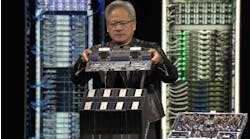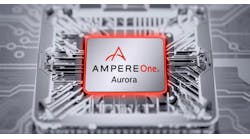How The Nervana Deal Boosts Intel’s Machine Learning Chops
This week Intel expanded its machine learning arsenal with the acquisition of artificial intelligence startup Nervana. The deal provides Intel with new software and hardware technologies as it seeks to gain traction against NVIDIA, whose GPU-based solutions are the platform of choice for many machine learning projects.
The Nervana acquisition also highlights how the growing focus on machine learning is advancing computing technology, which in turn will influence the design and scale of the data centers that house this equipment.
By buying Nervana, Intel adds expertise with ASICs (Application Specific Integrated Circuits) that are highly tailored for machine learning. It’s Intel’s second major acquisition to extend its technology portfolio beyond its core CPU products. Last year Intel acquired Altera, a specialist in field programmable gate arrays (FPGAs), semiconductors that can be reprogrammed to perform specialized tasks. Altera was also a leading player in programmable logic devices (PLDs), which are widely used to automate industrial infrastructure.
Diane Bryant, executive vice president and GM of Intel’s Data Center Group, said the Nervana deal will strengthen Intel’s offerings for high performance computing and hyperscale markets, especially the growing appetite for horsepower for artificial intelligence initiatives in Silicon Valley.
“We believe that by bringing together the Intel engineers who create the Intel Xeon and Intel Xeon Phi processors with the talented Nervana Systems’ team, we will be able to advance the industry faster than would have otherwise been possible,” said Bryant. “We will continue to invest in leading edge technologies that complement and enhance Intel’s AI portfolio.”
Optimizing for Software and Hardware
Nervana CEO Naveen Rao, who founded the company after working on artificial intelligence at Qualcomm, is jazzed about the potential to bring his company’s IT innovations to a larger market.
“We are here to make a dent in the world of computation,” said Rao. “With this deal, we can now shatter the old paradigm and move into a new regime of computing. The combination of Nervana’s technology and expertise incorporated into Intel’s portfolio will take deep learning/AI solutions to the next level. We’ll look back in 10 years and see this time as the inflection point of when compute architectures became neural.
Nervana brings several key capabilities to the table. It uses both software and hardware to optimize data-crunching for artificial intelligence. Its first product is a hosted cloud platform for machine learning, which uses Nervana’s Neon software to accelerate a cluster of NVIDIA TitanX GPUs (graphics processing units). Neon is an open source Python-based language and set of libraries for developing deep learning models.
Nervana is also developing an ASIC that it says has achieved training speeds 10 times faster than conventional GPU-based systems and frameworks. The company says it has built a better interconnect, allowing its Nervana Engine to move data between compute nodes more efficiently. Nervana has been secretive about some of the details of its technology, but The Next Platform has a deeper dive into what’s publicly known.
The Hyperscale Shift
The integration of FPGAs and ASICs is a key strategy for Intel as it sharpens its focus on chips for large data centers. This is driven by the shift to cloud computing, which has shifted buying power from enterprises to large cloud computing platforms.
“Seventy to 80 percent of systems will be deployed in large-scale data centers by 2025,” said Jason Waxman, vice president of the Data Center and Cloud Platforms Group at Intel.
Hyperscale data center operators are seeking to optimize their infrastructures, and FPGAs and ASICs offer more sophisticated processing architectures that can bring HPC-style parallel processing of workloads. This is especially important in machine learning, where neural networks must be trained by absorbing large datasets and refining its algorithms for accuracy. Once a system is trained, it uses inference to “learn” as it encounters new information.
Intel’s Plans for Nervana
Where does Nervana’s technology fit into Intel’s roadmap? Bryant provided the broad outlines of its strategy.
“We will apply Nervana’s software expertise to further optimize the Intel Math Kernel Library and its integration into industry standard frameworks,” said Bryant. “Nervana’s Engine and silicon expertise will advance Intel’s AI portfolio and enhance the deep learning performance and TCO of our Intel Xeon and Intel Xeon Phi processors.”
One benefit might be developing ASIC-powered machine learning platforms for hyperscale customers. Google is a long-time Intel customer that recently developed its own ASIC machine learning hardware (called the Tensor Processing Unit) to power its AI operation. Facebook has also developed its own machine learning servers powered by NVIDIA GPUs.
Nervana’s Rao is confident that with Nervana’s technology, Intel can be a major player in the future of machine learning and AI.
“The semiconductor integrated circuit is one of humanity’s crowning achievements and Intel has the best semiconductor technology in the world,” said Rao. “Nervana’s AI expertise combined with Intel’s capabilities and huge market reach will allow us to realize our vision and create something truly special.”






